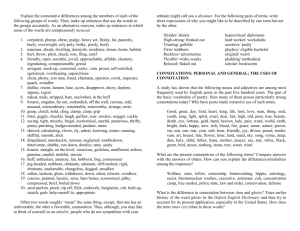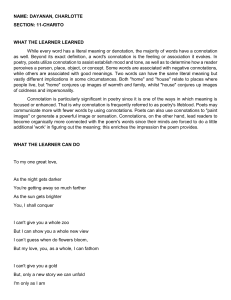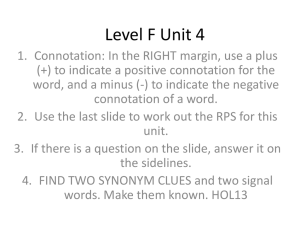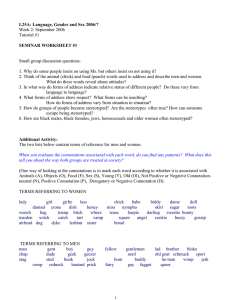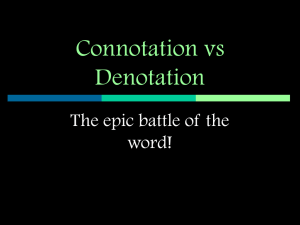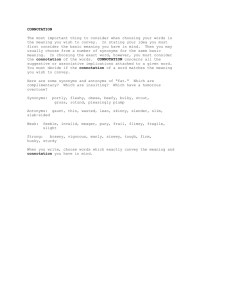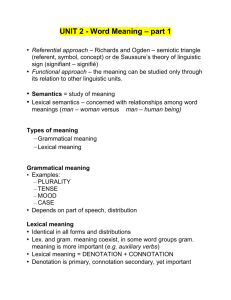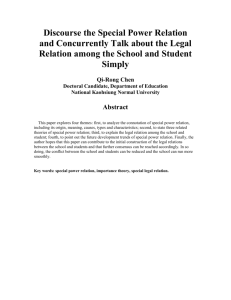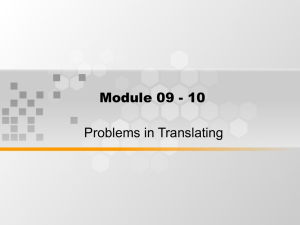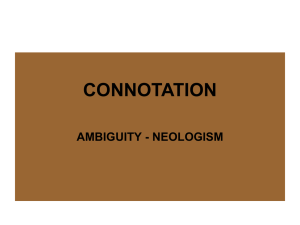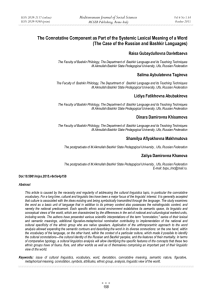Verbal Language
advertisement
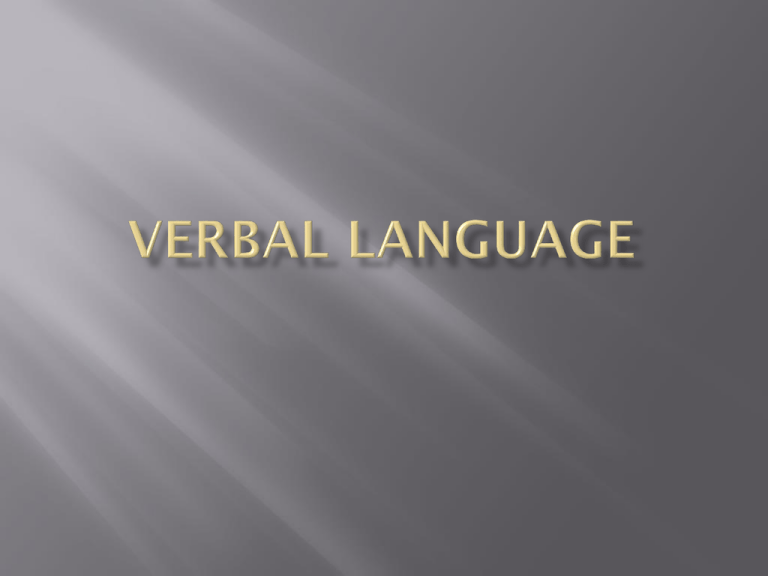
The hidden meanings, powerful feelings and associations that a word arouses. A person’s field of experience affects the person’s feelings about a word. Words can have positive connotations – handsome, natural Negative connotations- pain, foul, bully Neutral connotations- table, number, paper Example of words with similar denotations, but different connotation: Fat/ overweight; pretty/attractive/ beautiful; woman/lady/ http://www.flocabulary.com/word-choice/ The dictionary meaning of a word Example: Overweight: Definition of OVERWEIGHT 1: weight over and above what is required or allowed 2: excessive or burdensome weight Fat-having a lot of extra flesh on your body : having a lot of body fat : having a full, rounded form : unusually wide or thick Examples of Connotative Words Connotation Exercise #1 Below are groups of words which are often used to describe people. What are the connotations of the words? Childlike, Youthful, Childish, Young Disabled, Crippled, Handicapped Relaxed, Laid-back, Lackadaisical, Easy-going Slim, Skinny, Slender, Thin Cheap, Frugal, Miserly, Economical Young, Immature, Juvenile, Youthful Inquisitive, Interested, Curious, Convivial Confident, Secure, Proud, Egotistical Lovely, Knockout, Beautiful, Stunning Talkative, Conversational, Chatty, Nosy Connotation Exercise #2 Read the sentences below. Can you identify the words that have a negative connotation? 1.Bedford is an uppity neighborhood, but the rents are cheap. 2.On my flight to Los Angeles, I sat next to this babe. She was absolutely stunning. 3.Every morning my neighbor takes his mutt to the park. It always barks loudly when leaving the building. 4.You need to be pushy when you are looking for a job. 5.Bob is quite vocal at every staff meeting. He always speaks. Answer Key: 1. Uppity; 2. Babe; 3. Mutt; 4. Pushy; 5. Vocal Standard American Language Language that follows the rules and guidelines found in grammar and composition books Non- standard language Not conforming to rules and guidelines of grammar and composition, and considered acceptable by most educated native speakers A Subsystem of an established language Slang-recently coined words or old words used in new ways. Jargon- specialized vocabulary used by people in by people in the same line of work or hobby Dialect- a particular form of a language that is peculiar to a specific region or cultural group Slang Timely Informal Used by social groups or sub-social groups Defines the group and keeps others out Nonstandard Usually when it becomes mainstream, it changes Jargon: From old French word that means “warbling of birds” People use jargon to have a “common language” to discuss a subject’ Use to distinguish themselves from those outside the group. Who uses jargon? occupations technology The arts Trades Sciences Examples from medicine: BP= blood pressure FX= bone fracture
